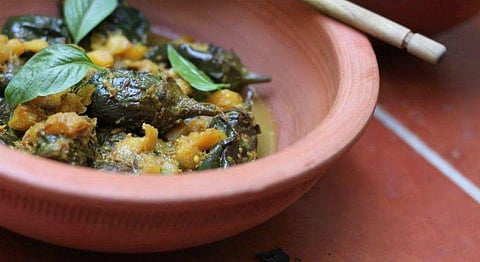
- HOMEGROWN WORLD
- #HGCREATORS
- #HGEXPLORE
- #HGVOICES
- #HGSHOP
- CAREERS
- ABOUT US
- CONTACT US

Family recipes are special. They are perhaps the only link one has to their ancestors. Each family has a wealth of recipes handed down from grandparents and great-grandparents. Oftentimes it’s difficult to tell how old your delicious family baingan ka bharta recipe really is, though you’re pretty sure it can’t be that old, can it? Well, research suggests that it might actually be almost 4,000 years old!
In 2010, archaeologists Arunima Kashyap and Steven Weber of Vancouver’s Washington State University set out to investigate the ruins of the Indus Valley Civilisation at Harappa in a way that had never been done before. Using new investigative methods, such as starch analysis, the pair and their team were able to glean an insight into the possible diets of the ancient Indians of Harappa. They were surprised to find out that the Harappans ate basically, everything that we do now, including curry.
The Indus Valley Civilisation or Harappan Civilisation is known to be one of the three oldest known civilisations in history (the other two are Ancient Egypt and Mesopotamia). Estimated to have existed between 5500 BC and 1300 BC, the Harappan Civilisation was, to our knowledge, widespread and extremely advanced. Evidence of wide networks of cities, urban planning, and significant industrial development have already been found. However, there is little known about the civilisation’s culture. Evidence of a language has been found, but not yet deciphered or translated. Beyond that, we have a little indication of what the lives of ancient Harappans were really like. However, Kashyap and Weber’s study was able to unlock the treasure chest of ancient Harappan food.
Prior to their study, majority of investigation into ancient food in Harappa had relied on ‘macrobotanical findings’, essentially food pieces like nuts and seeds that can be seen by the naked eye. However, through starch analysis, a process that involves comparing the chemical breakdown of recovered starch granules to the breakdown of starch granules from food cooked in a similar environment, Kashyap and Weber discovered more detailed information about the types of cooked food being eaten by ancient Harappans. In order to perform this analysis, they collected and cooked a number of local recipes, and compared the starch from their dishes to scrapings from shards of pots and plates recovered at Harappa.
Among their findings, they found evidence of food cooked with turmeric and ginger, garlic clove, and centuries-old eggplant — an ancient baingan curry. Along with this, they found remains of grains, such as millet and barley, that were been cultivated by the ancient civilisation. Evidence of mango and dates has also been found.
In a surprise turn of events, upon examining dental remains of cattle, Weber and Kashyap found that the cattle were largely fed the same food that the humans were eating. Another investigation, conducted last year by the Haryana Archeology and Museums Department, discovered evidence of cooked meat being eaten by ancient Harappans. Somewhat controversially, one of the meats possibly consumed by ancient Harappans was beef. Other than that, however, it seems that ancient Indians had largely the same diet as we do now.
Feature Image Courtesy — BBC
If you enjoyed this piece, we suggest you read:
